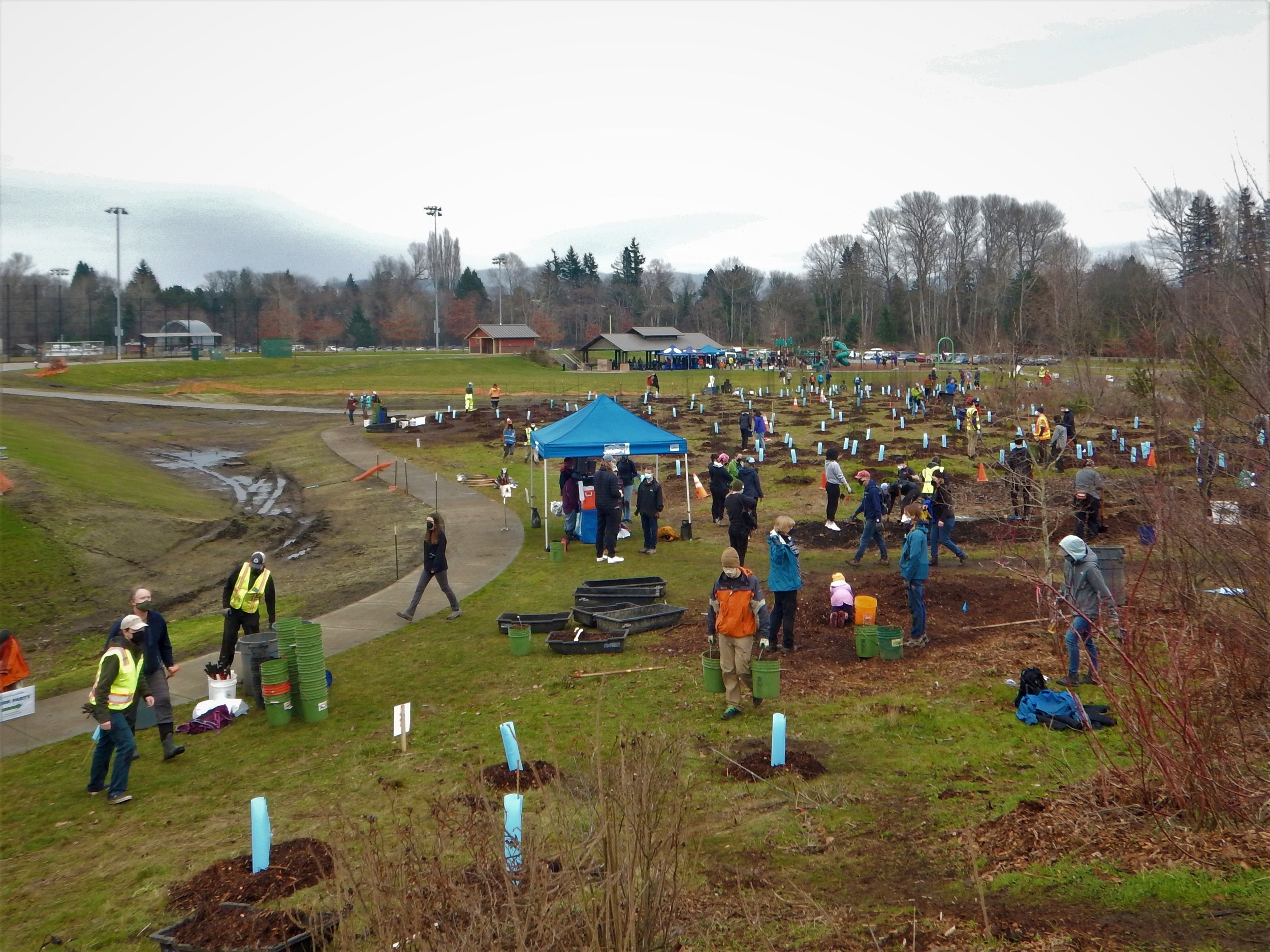"I credit most of the success we had in the Terrell Creek watershed to Elie's contagious enthusiasm and graceful leadership," said Vasak." I learned so much about community building from her."
Friedlob assisted NSEA in fundraising for donations to help restore Terrell Creek by planning community celebrations, festivals, and parades, getting friends and neighbors involved, and networking with other organizations and local businesses.
"One of the bottom lines of my whole message in terms of working with NSEA is the importance of involving the community and how you end up with all kinds of partners that you don't necessarily know at first you're going to end up being partners with," Friedlob said. "It's essential in any environmental activism or initiative to have as deep of community roots as you can get, and you have to keep working at it."
Terrell Creek is well known by the Birch Bay community, so NSEA's programming resonated with that population. Over time, the organization's connections multiplied, deepened, and expanded - and achieved much more than was initially intended.
"There was a multiplier effect in the connection between what we were doing with the salmon restoration and then all of this other community growth and participation in managing the environment here," Friedlob said.
Later in 2003, NSEA collaborated with Chums of Terrell Creek to restore stream habitat and remove fish passage barriers.
"The Chums of Terrell Creek started as a fairly cute idea to restore one of our local riparian areas and bring salmon back, but it ended up doing way more," Friedlob said.
Together, the groups have removed four significant barriers and restored nearly five miles of stream bank habitat. Additionally, they attempted to kickstart a run of Chum that had previously disappeared.
"During the months when salmon returned, water levels were pretty low. There wasn't a lot of surface water to go into it, and there was a dam at the top," Friedlob said. "They devised a solution that would allow Fish and Wildlife to release some water during the fall months and a little bit more water in the stream system so that Chum and Coho could make it upstream."
Shortly afterward, there were sightings of Coho in Lake Terrell, Friedlob said.
As she and her husband continued their various participations, many of the connections they built through NSEA indicated concern about rapid development in their watershed and showed interest in becoming involved with protecting and restoring water resources in Birch Bay.
Subsequently, Friedlob and her husband started a group called Smart Growth Birch Bay, which channeled those collective desires into structured community involvement to address concerns about water quality and aquatic habitat loss from urban development.
Eventually, they also helped form Birch Bay Watershed and Aquatic Resources Management District (BBWARM) in 2007.
"BBWARM was an extremely successful effort. I don't think there's another initiative like it, certainly not in Whatcom County and I think not even in the state," Friedlob said. "The taxes on impervious surfaces were used on projects to improve and maintain the quality of Birch Bay."
That same year, she joined NSEA's board of directors for a brief period. Then, from 2009 to 2011, she advised a second generation of the Chums of Terrell Creek.
In 2014, she retired from her managing consulting career. Moving forward, she plans to serve on NSEA's advisory council, which will help steer the organization's future direction and advise executive decision-making.
"It's a huge issue - the restoration of not just salmon, but our whole environmental predicament on the planet. This couldn't be a more fraught and important period," Friedlob said. "It's exciting to be even nominally part of some effort, but it's a very critical time."
The most important takeaways from her experiences with NSEA so far are the importance of involving the community in environmental restoration initiatives and the value of comprehensive participation to achieve sustained investment.
"This is a time of real challenge for any organization that's interested in bringing environmental improvement. It's a critical period in humankind's history and our environment. We're right at the precipice. For NSEA, that's going to scroll down into local issues, as well as larger environmental ones. But how that will play out transcends just NSEA," Friedlob said. "Every time I'm going down Chuckanut Drive and look at those beautiful Chum working their hard way up that stream, they never give up. It's a good lesson for us. Mother Earth and humankind have all been to the edge multiple times. So, we're there again. I'm hoping we're smart enough to figure ways out of it."






